OUR NEW SIDE-OF-HOUSE CAT RUN
We have four indoor cats, and as all cat owners (servants!) know, what goes in must come out, in the form of filled litter trays. It all costs money – firstly, for their food (expensive, in our case) and for the litter needed for the “end result”.
About three months ago I (Robyn) got the bright idea that, if we built an extra side-of-house enclosure, we could put a couple of large “dirt boxes” in that enclosure, and the cats would hasten to use them – at least for their poos. This didn’t prove to be the case initially, but they’re slowly getting the idea, thus reducing the cost of our litter bill, and also reducing our indoor litter boxes from three to two. However, they still prefer to “piddle” in the garage rather than put their delicate bottoms in the soil outside to date. Apart from saving a few dollars, this also reduces the time that Ken takes to diligently clean out their litter boxes every morning. They usually wait for him to do this and then dive in to do their “pees”!
We decided on the area to enclose, which is between the house and the existing retaining wall/side timber fence.
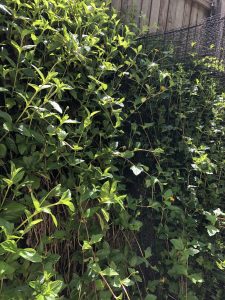
The fence sits above a “staged” BRICK retaining wall, and Ken planned that the roof panel would go across to halfway up the fence. It has two end panels, one with a zip opening. But we were then faced with the problem of how to attach the side panels to the retaining wall, which was also covered in Singapore Daisy. However, we solved this problem by attaching another panel covering the retaining wall, up to the fence where the roof panel attaches, and Ken was then able to attach the two side panels to that panel, thus enclosing the area completely and safely.
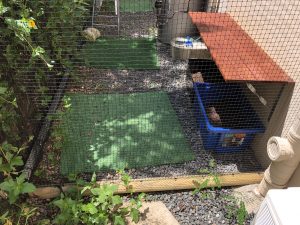
It did take a little time to install as it was a bit more complicated, because of the retaining wall panel, than the usual side-of-house to fence enclosure, but Ken did complete it in record time – and I did the zip (not my favourite job, and rather out of practice!).
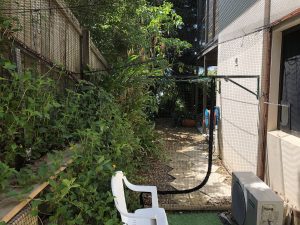
Ken then put a plank along the retaining wall, in amongst the greenery (which grows constantly!), and he also put together a rather “flash” shelf to cover the dirt boxes, which serves as something for the cats to sit on, but also keeps the dirt boxes dry in wet weather.
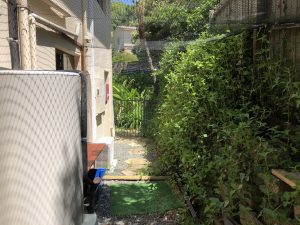
As the “floor” of the enclosure is BLUE METAL and our spoilt cats don’t like to walk on it with their delicate paws, we’ve bought three large pieces of “artificial grass” and placed them on the gravel for them to the walk, lie, and sit on. We’ve also placed a couple of plastic chairs in the enclosure for them to use as jumping blocks, and also for us to sit on while we clean “poo” out of their dirt boxes – which they are now using pretty well.
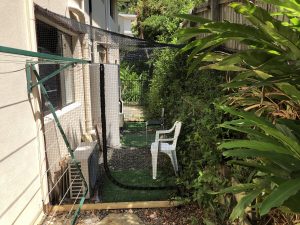
All in all the extra enclosure has been a great success. It’s also used as the “punishment” run if one of the gingers misbehaves, and they stay in there to contemplate their “sins” for an hour or so. This happens quite often as the smaller ginger, Tommy, likes to bully Riley (aka Skippy), who is a sook and hides under one of our, scratched, leather sofas. For this Tommy is banished downstairs for a short time in the hope that it will improve his manners. It hasn’t worked so far, I have to say.
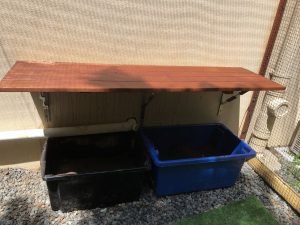
Our large enclosed deck upstairs is still, of course, the favourite, as we spend a lot of time out there also – particularly late afternoon with a soothing drink in hand, having survived another hectic 4 p.m. feeding ritual.
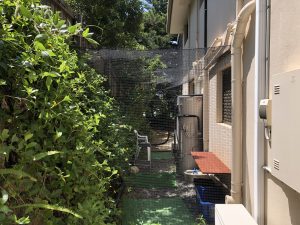
I now get great pleasure from surveying Ken’s handiwork, both from the deck and from the downstairs garden/entertainment area. He’s done a great job and it was all worth it.

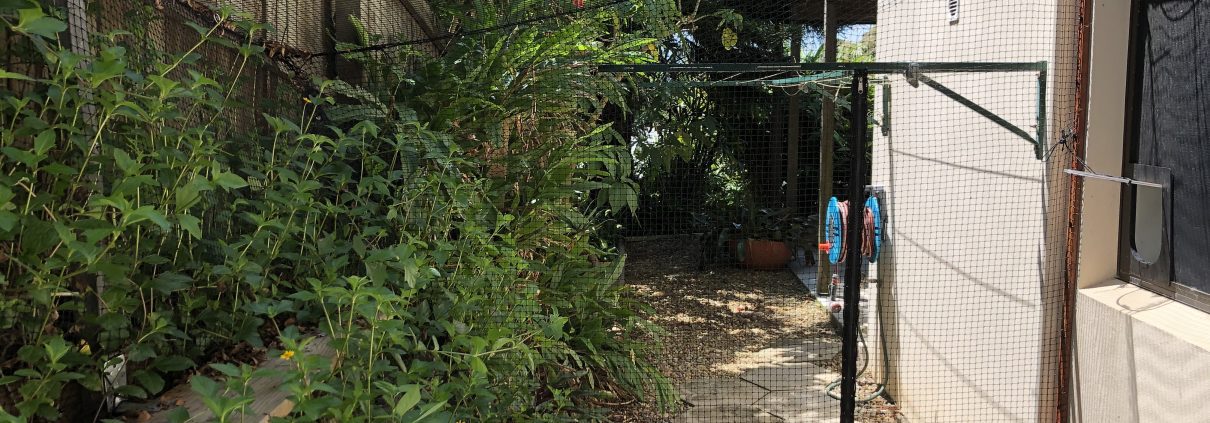

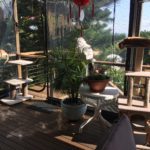
Leave a Reply
Want to join the discussion?Feel free to contribute!